by Ashley Carter
Share
As a laboratory professional, efficiently managing samples is crucial for maintaining data integrity, ensuring compliance, and delivering accurate results. In today’s fast-paced industry, relying on manual processes can lead to errors, delays, and operational inefficiencies. That’s where Sample Management Software comes into play, offering a comprehensive solution to streamline your laboratory’s workflow.
At the heart of Sample Management Software lies a robust Laboratory Information Management System (LIMS). A LIMS is designed to capture and track every aspect of your sample’s journey, from initiation to report creation. A LIMS provides complete traceability, ensuring seamless sample tracking and chain of custody.
Key Features of Sample Management Software
When evaluating Sample Management Software solutions, it’s crucial to understand the key features that align with your laboratory’s specific needs. Here are some of the most essential features to consider:
- Sample Traceability and Labeling: Robust sample traceability is paramount, ensuring samples can be identified and tracked throughout the entire laboratory workflow. This feature enables seamless traceability back to production operations or customer information. Sophisticated sample management software incorporates status tracking, label creation, and metadata capture within a user-friendly, automated system.
- Security and Audit Trails: Compliance with regulatory requirements often necessitates stringent controls over data access and change tracking. Leading sample management software solutions implement role-based security, granting users access only to the functions and data they require. Comprehensive audit trails document every action taken on a sample, including who made the change and when. This ensures transparency and facilitates successful audits.
- System and Instrument Integration: Ensuring data accuracy and reducing duplicate efforts are paramount in modern laboratories. Top-tier sample management software seamlessly integrates with other systems and analytical instruments used in your laboratory. This integration enables automatic sample and testing creation within the LIMS based on data from ERP or CRM systems. It also supports direct population of test results from connected instruments. Regardless of the integration approach, this capability allows users to enter data once, minimizing errors and accelerating turnaround times.
- Reporting and Data Visualization: While capturing sample information and storing data is essential, the true value lies in transforming this data into actionable insights. Comprehensive sample management software includes robust reporting capabilities, enabling the generation of reports that incorporate sample and testing data. Additionally, advanced data analytics tools can distill complex information into intuitive dashboards and key performance indicators, facilitating data-driven decision-making.
Benefits of Using Sample Management Software
Implementing a robust Sample Management Software solution offers far-reaching benefits that extend beyond the core features themselves. By leveraging a comprehensive Laboratory Information Management System (LIMS), laboratories can unlock a wealth of operational and strategic advantages:
- Optimized Efficiency and Productivity: Sample management software provides invaluable tools for monitoring workflows and tracking throughput. Automated processes and seamless integration with other systems supports laboratory personnel. They can shift their focus from tedious paperwork and data entry tasks to core testing and analysis activities. This streamlined approach maximizes productivity and accelerates turnaround times, enabling laboratories to deliver results more efficiently.
- Enhanced Data Accuracy and Integrity: Stringent security measures, such as role-based access controls, ensure that only authorized personnel can perform specific actions within the system. This rigorous approach to data governance significantly enhances the integrity and reliability of sample data. Furthermore, seamless integration with analytical instruments eliminates the risk of manual transcription errors. Thus, further fortifying data accuracy and minimizing the impact of human errors.
- Facilitated Regulatory and Compliance Adherence: Navigating the intricate landscape of regulatory requirements and industry standards can be a daunting task. Sample management software with a user-friendly interface and code-free configurability empowers laboratories to adapt swiftly to evolving demands. This agility enables the creation of new fields, tests, or analytes as needed. It helps to ensure compliance with emerging requirements without relying on vendor support. Moreover, the integration of various LIMS components provides end-to-end traceability, ensuring laboratories can easily track and document all necessary information. Learn more about preparing for an audit with a LIMS in this article: Preparing for an Audit with LIMS.
Choosing the Right Sample Management Software
After recognizing the benefits a Sample Management Software solution can bring, the next step is selecting the right vendor to partner with. This decision is highly dependent on your laboratory’s unique requirements. It should be approached with careful consideration, as a LIMS represents a long-term investment in your organization’s success.
While there are numerous vendors offering LIMS solutions, it’s essential to evaluate them against a comprehensive set of criteria. This ensures you select a partner that can meet your specific needs and provide sustainable value over time. Here are a few key factors to consider:
- Comprehensive Functionality: Conduct a thorough assessment of your laboratory’s requirements and ensure the prospective LIMS vendor can deliver the necessary features and functionality. Beyond the core sample management capabilities, consider additional modules or integrations that may be essential for your operations, such as instrument interfacing, electronic data capture, or advanced analytics. Importantly, prioritize vendors that offer user-friendly configuration tools, empowering your team to adapt the system as your needs evolve, minimizing reliance on costly customizations or vendor support.
- Flexibility and Scalability: As your laboratory grows and evolves, your LIMS solution must be able to adapt seamlessly. Evaluate the vendor’s ability to accommodate customizations and tailored workflows that align with your laboratory’s unique processes. Additionally, consider the system’s scalability to support future expansion.
- Vendor Reputation and Support: A LIMS is a critical investment that will shape your laboratory’s operations for years to come. Thoroughly research the vendor’s reputation, market standing, and customer satisfaction levels. Prioritize vendors with a proven track record of delivering reliable solutions, responsive support, and a commitment to continuous product development and improvement. A strong partnership with a reputable vendor can ensure your laboratory remains well-positioned to navigate industry changes and capitalize on emerging opportunities.
For further information to guide your evaluation process, read this article: “Choosing a LIMS Provider – 10 Things to Consider“. It provides a deeper exploration of essential factors to weigh when selecting a LIMS vendor.
Conclusion
In today’s rapidly evolving laboratory landscape, characterized by increasing demands, stringent regulations, and intense competition, implementing a robust Sample Management Software solution is no longer a luxury but a necessity. By harnessing the power of a comprehensive Laboratory Information Management System (LIMS), laboratories can also unlock a wealth of operational efficiencies, data integrity safeguards, and compliance assurances that are essential for long-term success.
At Wavefront, we take pride in our two decades of experience supporting laboratories across diverse industries, delivering tailored LIMS solutions that drive operational excellence and empower data-driven decision-making. Our team of industry experts possesses deep knowledge of laboratory workflows and regulatory landscapes, enabling us to provide personalized guidance and implement LIMS solutions that support and propel your operations into the future.
Embark on your digital transformation journey with confidence by scheduling a no-obligation demo with Wavefront today.
STAY IN THE LOOP
Subscribe to our Free Content
Learning about LIMS is a monthly article series where Wavefront shares questions that have come up throughout our interactions with a range of individuals and customers. We do our best to provide information about each topic to help people learn more about LIMS.
Sign up here to be added to our mailing list and receive these articles directly in your inbox.
In today's rapidly evolving laboratory environment, effective data management has become increasingly crucial for maintaining operational excellence and competitive advantage. Modern laboratories generate an unprecedented variety of data types, each requiring specific handling protocols and storage considerations. A robust Laboratory Information Management System (LIMS) serves as the cornerstone of efficient laboratory operations, providing comprehensive solutions for data complexity, regulatory compliance, and long-term data integrity while ensuring seamless workflow integration.
Laboratory staffing shortages have become a critical challenge across industries. Learn how LIMS features and automation helps laboratories maintain high standards and increase efficiency, even with reduced personnel. Wavefront LIMS provides comprehensive solutions for workflow automation, knowledge transfer, and staff development - enabling your laboratory to thrive despite staffing constraints.
In an era of increasing complexity and rising performance expectations, laboratories must do more with less. Discover how a Laboratory Information Management System (LIMS) can transform operational challenges into competitive advantages, turning your lab from a cost center into a strategic asset.
Efficiently logging work into a Laboratory Information Management System (LIMS) can greatly enhance lab operations by automating routine tasks, minimizing errors, and ensuring compliance with testing standards. In this article, we explore how features like automated sampling plans, pre-configured templates, and real-time traceability help laboratories streamline their workflows, meet regulatory requirements, and improve productivity. Discover how logging work into LIMS can transform your lab’s performance and keep you competitive.





